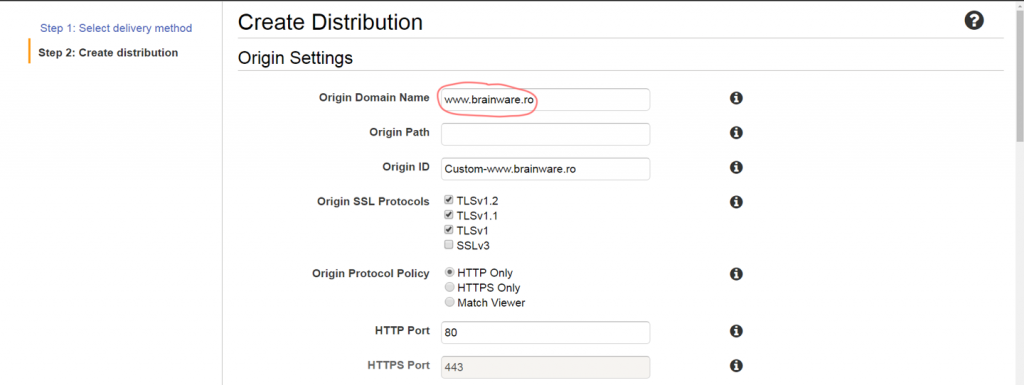When do you need to use some form of Cloud Distribution?
If you consider this concept a form of caching, then you need it when your website passes a certain threshold in terms of users and the volume of data that is being sent out. The actual numeric figure depends entirely on your setup – you may have large files and sending them out of your server may fill up the available bandwidth. Or you may have a lot of users and may want to ease the load on the server by pushing some of this load to somewhere else.
Nevertheless, the purpose of this article is to show you how this is being done by using the AWS CloudFront.
AWS CloudFront
First, you need to go to the “CloudFront” option in the AWS Console and attempt to create a Web distribution. On the creation page you should first fill in your domain name as the distribution origin (the primary source of the content):
Starting from today I am one of the AWS CSA(A) certified professionals. The license number is generated sequentially so it is easy to infer that I am the the 16.891st person on this planet holding the title, but given the 2 year recertification cycle I assume that many of those who were certified before may have not renewed their certification status.
Starting on the path
I have registered my own private AWS account in the second part of 2014, around the time when I was assigned to the project I have talked about in the previous text. I did not make much of that account and still do not use it for more than cloud backups; without a professional motivator, getting on this path will not truly bring anyone very far.
The game changer was the DevOps work I have started doing for a customer of my employer at the time: they had a fully configured AWS environment I was given access to. The year Amazon suggests you to spend in a professional environment before trying to get certified is by no means a spurious requirement; there is an entire ecosystem that needs to be mastered in order to make the best use of it.
Preparation
The certification adventure started about a month ago by reading this Reddit post. I didn’t get the free full month of study on offer due to the timezone difference but the seed got planted. What happened next?
About a year ago, during a time when I was barely aware about Cloud Computing or Amazon Web Services, I got assigned, along with a couple of colleagues from this consulting company I was working for, to bring an existing codebase from “alpha” to “production” and then ensure its smooth deployment to Amazon Cloud.
The customer wanted to go “live” in less than 3 months; they also wanted to be able to handle tens of thousands of visitors that would obviously click on banners and make them money. What it’s actually more probable is that they were hoping for a good exit, that is passing the hot potato to somebody else while walking out with a proft. On a side note, there is a term that could be used for these people, but this is not a meme-text so I won’t go more on that route.
Starting on a new project
With this project, things initially went to some direction: we had to incrementally deal with quite a few functionality issues and in the end we were able to put fixes for more than 100 bugs and glitches. Actually, this was all that we could do, along with the long hours required to get things done.
We could not be bothered by any setup issues with the “Cloud” configuration: we knew near to nothing on the topic and the customer fiercely guarded the “keys to the kingdom”; they would only agree on instance and resource set-ups on a case-by-case basis anyway. They were probably thinking they were paying way too much for those pesky Eastern European contractors (us), so I kind of get the “why” on keeping a close eye over the Amazon bill. It was fine by us; at the end of the day it was their home, with their needs and their rules.
